Versatile munition. The story of the return of caliber 57 mm
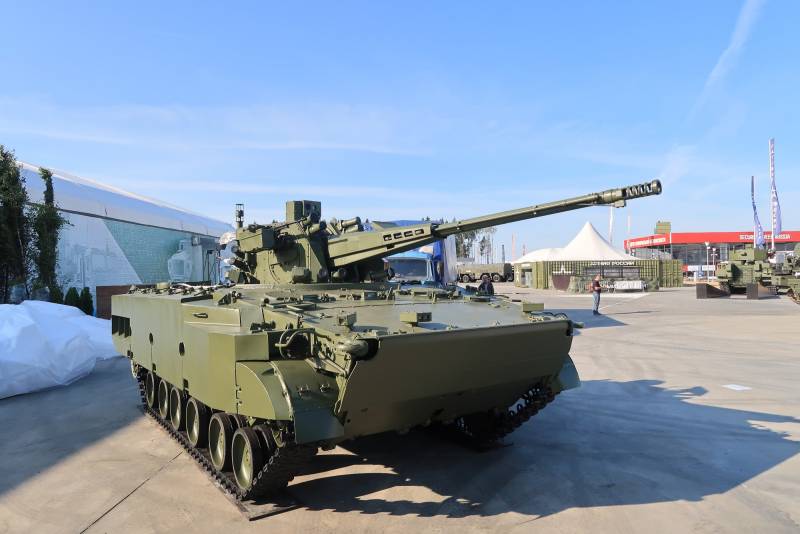
An Unnecessary caliber
In the period between the two world wars artillery guns with a caliber of 57 mm seemed theorists of war, in particular, in the USSR, and unnecessary intermediate models. The damaging abilities of 45 mm ammunition was enough to destroy poorly armored vehicles, which included the vast majority of tanks. Not useful 57-mm air defense – rapid-fire guns enough to 30-35 mm, while high order was required to work more than caliber 76 mm. Among unarmored targets on land, 57 mm is frankly not enough – explosive and shrapnel effect was insufficient. But in the prewar period, the Soviet intelligence got information about the appearance in Germany of tanks with a significant level of reservation. The Soviet response to Krupp steel alloy was 57-mm ZIS-2, which was adopted by the GKO decree of the USSR from June 15, 1943. By the way, the mastermind designers of this cannon is a British naval gun QF 6-pounder Hotchkiss that previously the Russian Empire purchased, and later, in 1904, was organized by the licensed production at the Obukhov steel mill. But back to the caliber of 57 mm in the variant of the ZIS-2. The gun, despite the intelligence, in serial production early in the war was not sent, as the power tools seemed excessive. Armor-piercing shell cannons like this weight 3,14 kg at a distance of 500 meters is allowed to penetrate 100 mm of armor. In many ways, this capacity has become topical only in 1942-43 when the Germans were there were medium tanks. Sabots ZIS-2 with an initial velocity of 1270 m/s at all shot from 500 meters up to 145 mm. Gun was so successful that the head of the British mission, asked for one copy home for review. But the war was over, and from 57 mm to sense was not enough – the tanks often got thick armor, and the chances of a confrontation with them at the guns was a little.
In the postwar Soviet Union, however, 57mm did not have time to leave the stage finally, in 1955, took arms tracked anti-aircraft self-propelled ZSU-57-2. Twin antiaircraft machine consisted of two guns of AZP-57, firing armor-piercing tracer and fragmentation-tracer shells. Interestingly, self-propelled anti-aircraft gun was designed for air cover tank regiments and was replaced in the army anti-aircraft 14,2 mm machine gun ZPU-2 on the basis of the BTR-40 and BTR-152. Despite the fact that the total power of the volley ZSU was very high, as a means of air defense machine has shown itself weak. Case in aviation that mass conversion to jet thrust and increased flight speed. At ZSU-57-2 was absent automation system fire control gunner the speed and direction of flight of the target is actually determined by eye. In the end, 57-mm self-propelled gun for air defence was removed from production, but the gun itself AZP-57 continued to serve within a naval installation AK-725. Then anti-aircraft tracked vehicle was irrelevant. Work on the armored armed targets was dangerous because of poor booking habitable tower, and on the counterinsurgency fight and especially about the "asymmetric threat" then the few who thought everyone was preparing for a global war.
But abroad ZSU with twin 57-mm guns proved to be competitive. So, during the war in Vietnam machine was in service, BHA, successfully coped with the enemy infantry and even tanks struck in the side of the projection. Contributed to the penetration of the projectile 80 mm, the actual rate of fire 70 RDS./mines and dense thickets, allowing to organize the ambush. Later in the history of ZSU-57-2 was a series of local conflicts, where the car was struck by all the barrage of fire that rained on the enemy, but there is no logical concept not received.
57 mm at sea
In the West after the war, caliber 57 mm was originally intended for naval forces, and the most successful incarnation was the installation of the Swedish Bofors 57mm/60 SAK Model 1950. It is the same as the ZSU-57-2, was fitted with the twin guns and also had to work primarily at air targets. This tool has proven to be quite successful, it was bought by many countries, and the French acquired the license to manufacture and in the modernized version of the 57 mm/60 Model 1951 were mounted on their cruisers and destroyers. Were the Swedes trying to build on this success and establish anti-aircraft gun on land chassis, but the unit with the alias name 57mm/luftvarnsfutomatkanone m/1954 not earned the fame of her older sister.
At Least for the beginning of 50-ies it was a progressive design, working in the two-seater with radar and is equipped with a fire control system, but a decisive advantages over a more modest 40-mm gun Bofors 57-mm was not, and in the end the company managed to sell only 170 guns.
Currently, the concept of 57-mm cannon in the Maritime theater of military operations continues its development and the Swedish development remain in this niche world leaders. Single-barreled Bofors SAK 57 last modification Mark III is installed, in particular, the American "littoral combat ship" LCS the type of Freedom and Independence. Now the gun gets unique in many waysammunition 3P (Pre-fragmented, Programmable and Proximity-fuzed – pre-from fragmented, programmable, with remote detonator). And recently appeared guided missile ORKA (Ordnance for Rapid Kill of Attack Craft – "the ammunition to quickly defeat the attacking vessels") from the British BAE Systems. For reference: Bofors lost its independence in 2000, when it passed into the hands of United Defense Industries, which, in turn, five years later bought the British BAE Systems. In fact, here the projectile 57-mm experienced a second birth – its form factor allowed to place inside the complex control equipment and an impressive stock of EXPLOSIVES.
The 3P Shell in the United States was named Mk.295 Mod 0 and kitted out with 420 grams of plastic explosives, PBX (plastic-bonded explosive) along with 2400 ready damaging elements made of tungsten. Multi-mode Fuze Mk. 442 Mod 0 in the head part is equipped with an electronic unit and the radar, which are able to withstand shock load 60,000 g. The projectile is constantly in radio contact with the ship's onboard fire control systems that give information on the timing of the flight before the explosion and the nature of detonation. The radar on Board the 57-mm projectile is designed to create toroidal heavy around the flying field to the target of the munition. Mk.295 Mod 0 can be programmed as much as six modes of operation is a true universal soldier in the hands of the Navy. Operating modes: 1. Undermining at the specified time. 2. Classic contact. 3. Undermining with the minimum of delay, for example, inside of a coast guard boat. 4. Non-contact explosion near the target based on data from the on-Board radar. 5. Mode when pin undermining is a priority, and in the case of a miss occurs adjustable non-contact explosion. 6. The most difficult adjustable non-contact undermining (main air mode against missiles, strike aircraft and helicopters), that is, for applying a fragmentation field, the maximum damage is preset to a certain time delay detonation warhead of the time as a proximity fuse detects a target.
But that's not all. Shell ORKA Mk.295 Mod 1 is based on technologies worked into 127-mm and 155-mm Excalibur ammunition, and is able to change the direction of flight. In the form factor of the 57 mm is probably the most high-tech weapons at the moment, even if not yet accepted for service. The seeker is guided by reflected laser beam, and she is able to identify the purpose of the water and in the air, while referring to a predetermined database. Combined channel infrared seeker operates in the shortwave band, coincident with the laser channel frequency. In the same way as the simplified version of the Mk.295 Mod 0, on-Board computer of the managed projectile ORKA is connected to ship systems, which provide it real time information on the nature of the battle. There are three basic options for using shell: guidance for laser lighting combo mode, when the first working laser, and then the maneuvering target is induced by GOS; the Autonomous homing on the downloaded image of the target – homing induces projectile on the trajectory. Finally, the fourth mode is shifted to the target when the gun hits the object with a system of detection of the laser radiation. Here the shell first induced on the laser spot near the destination, and when approaching the control in their hands takes infrared seeker. Interestingly, when BAE Systems unveiled its shell, the priority objectives were considered maneuverable boats of the Islamic revolutionary guard Corps of Iran.
57 mm on land
The Idea of moving the powerful 57-mm gun on a self-propelled land chassis was adopted by the German engineers, to build in the midst of the cold war experienced AIFVSV Begleitpanzer 57 on the basis of the Marder IFV. Tested the new product before 1978, however, considered that the project is not very promising and sent in a box. The main argument was the presence of anti-tank BGM-71B TOW, which allowed the machine to deal with the tanks, and the standard 20-mm automatic gun Rh-20 infantry fighting vehicles Marder was quite enough to combat the Soviet series of infantry fighting vehicles.
After the Germans idea of re-translation of 57 mm in ground forces embodied in the Ukraine in 1998 when showed on the ground near Goncharovsky, in the Chernihiv region of the BTR-80 with the good old gun AZP-57. Aiming and loading of this too powerful for the chassis of armored personnel carrier gun carried outside of the crew compartment under the open sky. Obviously, after the first firing tests Ukrainians reasonably refused setting machine series.
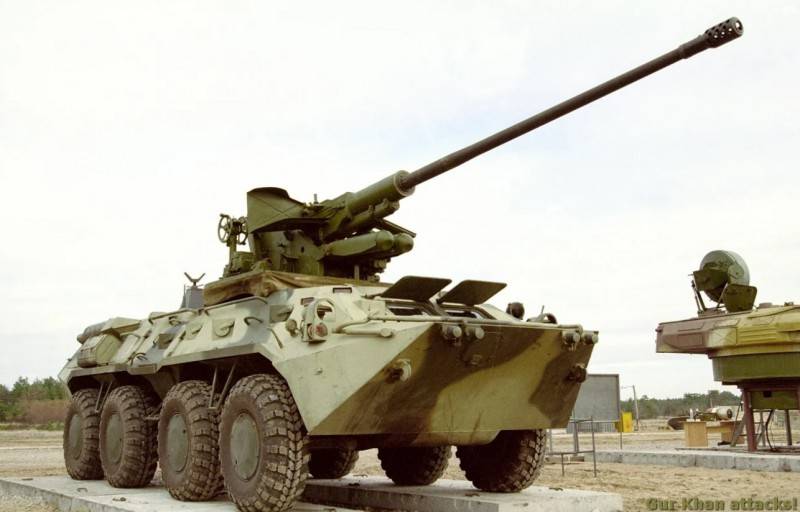
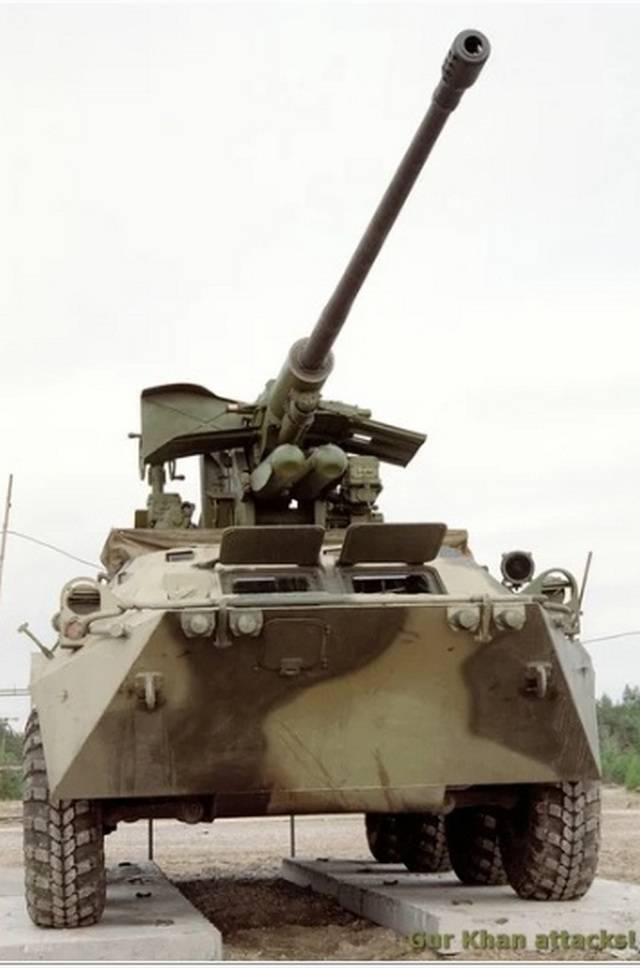
In 2011, in Moscow in the company "Special mechanical engineering and metallurgy" proposed a program of modernization of PT-76. Tracked the car mounted a 57-mm gun, which was renamed BM-57, and the floating tank PT-2000. The idea was much more robust than their Ukrainian colleagues, but she has not received further development, primarily because of the obsolescence of the platform.
The Main reason why the Russian voenproma drew attention to the 57 mm, of steel requirements to the versatility of the main fire. The conditions of combat use is now required to respond quickly to threats from the air, including stealth drones carrying cumulative ammunition. Of course, for the destruction of such aircraft need not ordinary blanks, and the ammunition of the class referred to earlier Mk.295 Mod 0. In addition, in the West, traditional light armored vehicles has booking resistant to the domestic 30-mm gun 2A42 (at least in the frontal projection), which requires Russian gunsmiths or to develop new piercing ammunition, or to increase the caliber. And finally, the high-explosive cannon shells with a caliber of 57 mm is much more effective than 30 mm, although take up more space in the fighting compartment. In many ways, it must replace two guns – 100-mm launcher 2A70 30 mm gun 2A42. The output of modern Russian armored vehicles will get universal weapon, allowing you to successfully deal with the growing power of "asymmetric threats".
Based On the materials of: "Science and technology", "Equipment and armament", "Bulletin of the Russian Academy of rocket and artillery Sciences", "Maritime collection".
Related News
Cobray Ladies Home Companion. The strangest gun in the history
Widely known American firm Cobray Company brought a number of controversial and even absurd projects of small arms. Her few own development differed ambiguous, to put it mildly, specific features. One of the results of such engine...
American flying saucer Lenticular ReEntry Vehicle: where are they hidden?
Orbital bombers LRV became the most secret military space project the US fragmentary information about which here already more than 60 years, dominates the minds of security personnel all over the world.Alien technology in the ser...
The new upgrade Malki: self-propelled gun as part of the complex
One of the most powerful artillery systems of our army is a self-propelled gun 2С7М Malka. This product has a great age and in need of modernization. As announced recently, the construction update has been completed and verified o...













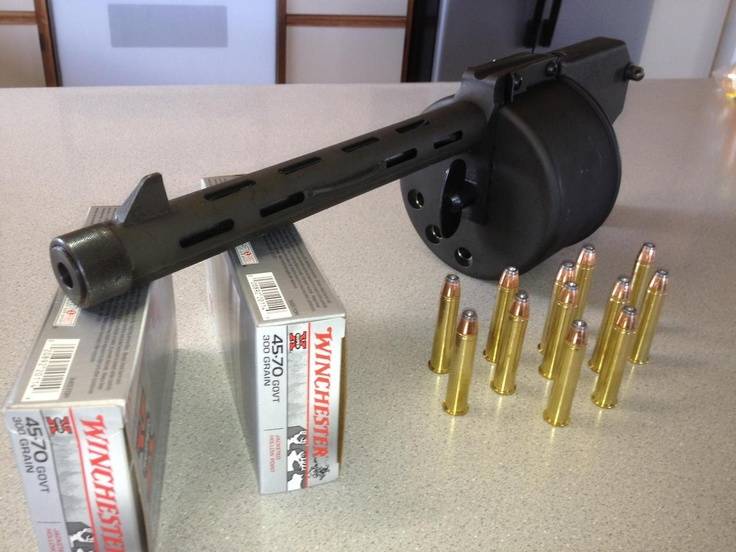
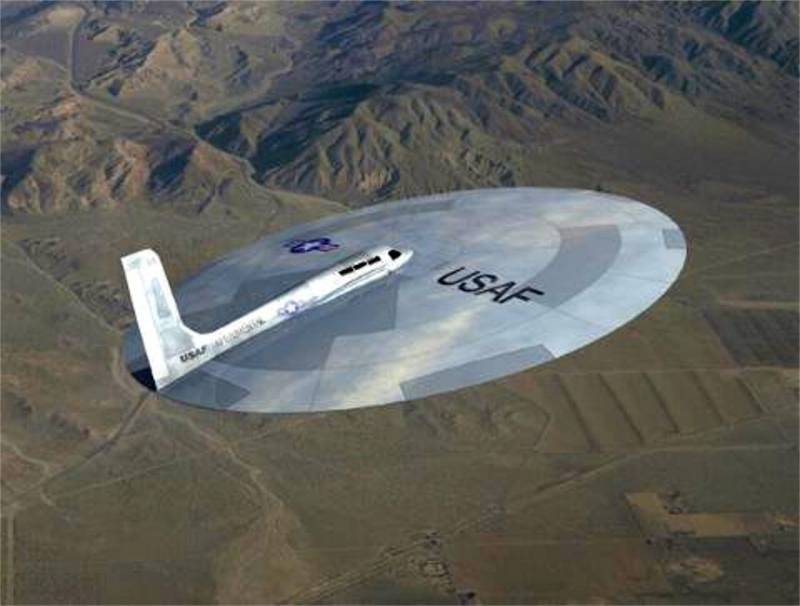
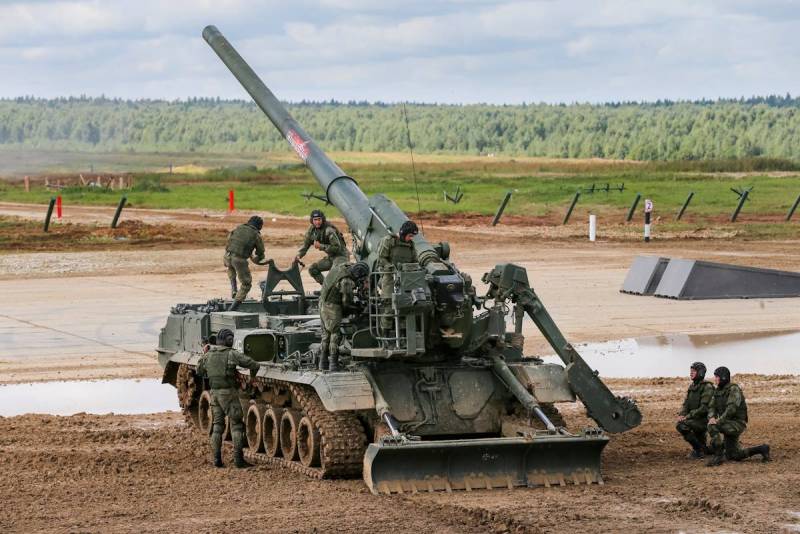
Comments (0)
This article has no comment, be the first!